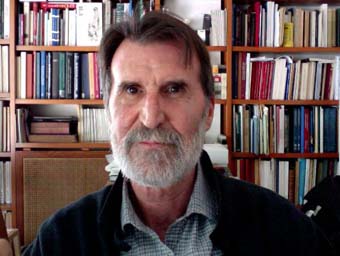
The full university professor of Archaeology of the UV, Pere Pau Ripollès, will be granted in London the medal of The Royal Numismatic next Tuesday (20 December). Ripollès will give a conference titled ‘Las acuñaciones ibéricas (VI-I siglos a. C.)’ (Iberian Minting -6th to 1st centuries B.C.-). The act will start at 18:00 in the headquarters of the company Spink & Son.
During his conference, Pere Pau Ripollès will evoke the period which covers from 6th to 1st century B.C., when the Iberian Peninsula was a territory inhabited by a prominent variety of very different cultures when it comes to social, political and economic development levels. The first coins were minted by the Greek communities of Emporion and Rhode from the 6th century B.C. The introduction of coins among the Iberians was a slow process which was in addition unequally extended in the territory. The monetisation of the Iberian Peninsula started with the Second Punic War. After that, Romans introduced their native productive economies along with the rest of the Roman state, and this contributed to an increase in the use of coins.
Pere Pau Ripollès is full university professor of Archaeology in the Department of Prehistory, Archaeology and Ancient History of the UV. His research has focused on the Ancient Numismatics of the Iberian Peninsula. He has been visiting researcher in the most important numismatic institutions in the world. He has been given some grants to develop research projects in the Spanish School of History and Archaeology of Rome; the Cabinet des Médailles, Paris; the University of Oxford (visiting professor); the Department of Coins and Medals of the British Museum in London (voluntary assistant keeper); the American Numismatic Society, of New York (visiting scholar ANS Summer Seminar 2013); the Royal Coin Cabinet, of Stockholm; and the University of Bologna (visiting professor).
Among the most relevant studies that have been published (written by himself or in collaboration with other researchers), we can find: ‘La circulación monetaria en la Tarraconense Mediterránea’ (‘Monetary circulation in the Mediterranean Tarraconensis’, Valencia 1983); ‘Le monete ispaniche nelle collezioni italiane’ (Roma 1986); ‘Monedas Hispánicas’ (‘Hispanic Coins’, Madrid 2000); ‘The Roman Provincial Coinage’ (London, Paris 1992), which constitutes the most updated catalogue and study on provincial coins of the Roman Empire period; ‘La ceca de Arse-Saguntum’ (Sagunto 2002), ‘Monedas Hispánicas de la Bibliothèque Nationale de France’ (‘Hispanic coins of the Bibliothèque Nationale de France’, Madrid 2005); or ‘Las monedas provinciales romanas de Hispania’ (‘The provincial Roman coins of Hispania’, Madrid, 2010).
His doctoral thesis was granted the ‘Javier Conde Garriga’ Prize, given by the Spanish Numismatic Association, 1983. He has also been awarded the Jeton de Vermeil medal, granted by the Société Française de Numismatique, 1998, and the Allier de Hauteroche medal, granted by the Académie des Inscriptions et Belles Lettres, Institut de France, 1999. Nowadays, he is member of the Royal Academy of History (Madrid) and vice president of the International Numismatic Council (2015-2021).
Last update: 15 de december de 2016 11:20.
News release


















